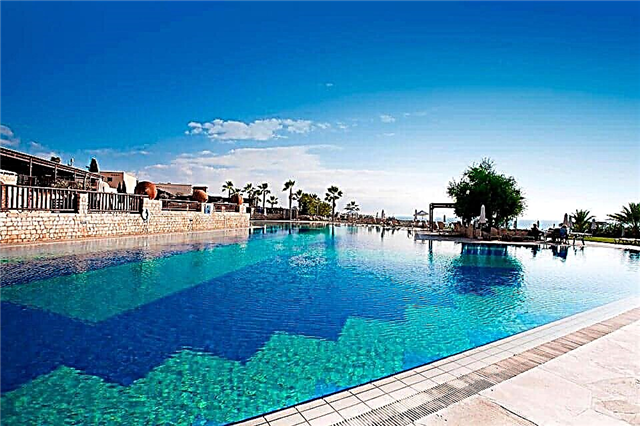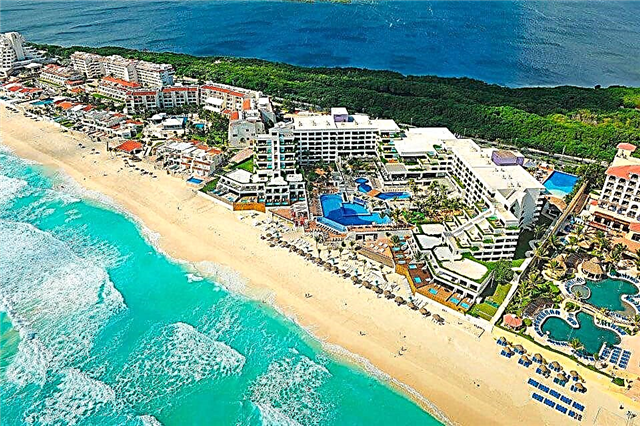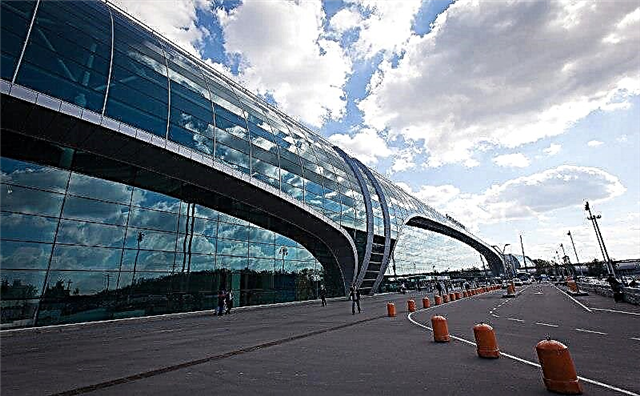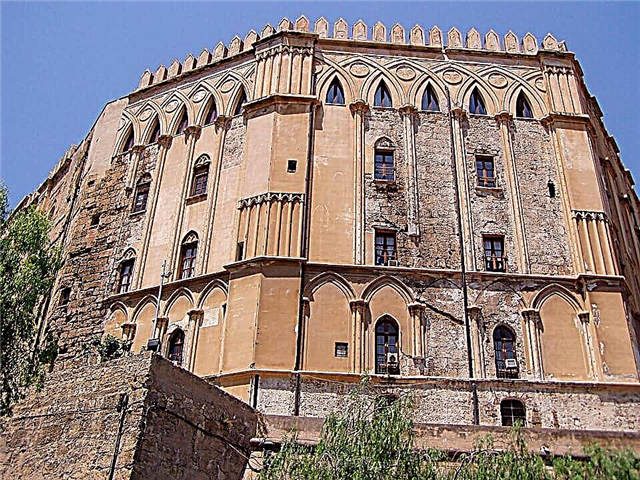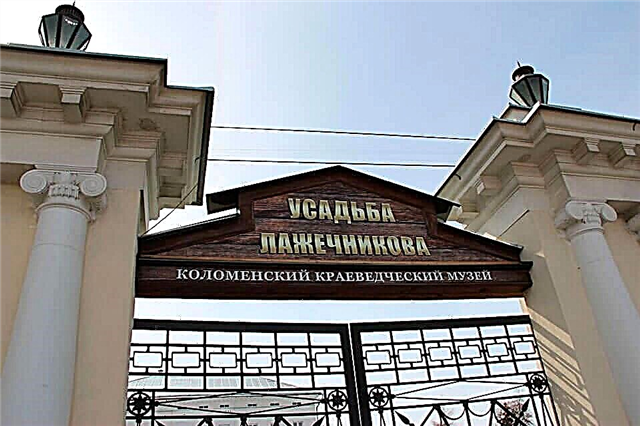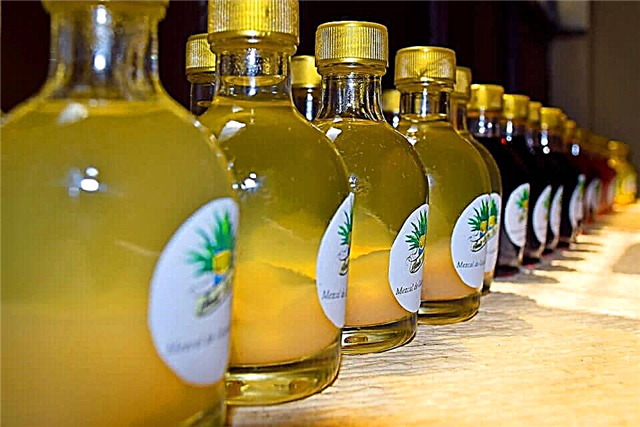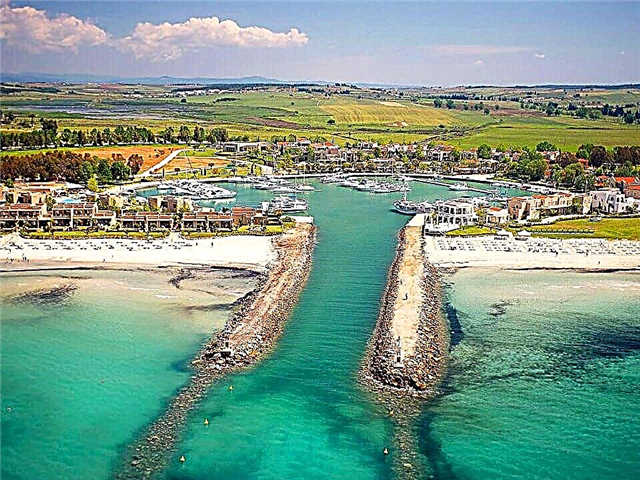One of the most extraordinary in form and mysterious in origin, the Halkidiki peninsula is a real pearl of resort Greece. The p / o jutting into the Aegean Sea is divided into 3 "fingers", each of which is a wonderful corner of the paradise tropics, with amazing beaches, cozy bays and healing air saturated with the aroma of pine needles. The names of the "fingers" are associated with ancient Greek mythology, which tells about the giant heroes who waged a long-term war with the gods of Mount Olympus. Huge stones served as a tool for them, which subsequently formed three ledges. Let's talk about the most popular sights of Halkidiki.
Petralona cave
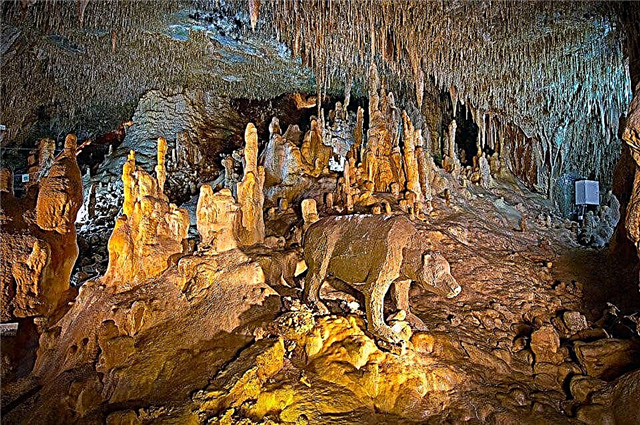
Despite the huge difference in the territories of Greece and China, Greece is the second country after China in the number of limestone caves. One of the largest and most amazing in beauty is the Petralona Cave, located on the slope of Mount Katsika, 270 meters above sea level, not far from the village of the same name. It was discovered in 1959 by one of the villagers, who examined the mountain for a source of water and stumbled upon a deep crevice.
When the risky young people, who expressed a desire to descend into it, found themselves in a spacious dungeon, they were shocked by the peculiar beauty of the cave. Bizarre formations of stalactites and stalagmites, intertwining into fantastic patterns, have created a special, uniquely beautiful natural design. Since that time, a serious survey of the unique dungeon began, as a result of which the bones and skulls of people and animals that lived in these places hundreds of thousands of years ago were discovered.
Now all these exhibits are displayed in the showcases of the cave, being irrefutable proof of many scientific theories about the development of life on Earth. The dimensions of the cave are impressive: if you add together the length of all its halls and corridors, you get at least 2 thousand km. A tour of the mysterious cave labyrinths is a journey into the world of beauty and mystery. Before descending into the cave, you need to remember that this is a dungeon, where the temperature is not summer (17 degrees), and you should dress warmly.
It is very interesting to visit the Anthropological Museum located nearby: its expositions are a visual aid for studying human life.
Meteora monasteries
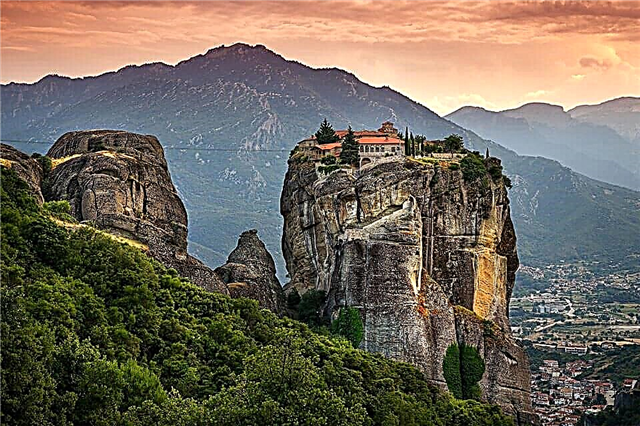
In the popular tourist region of Greece - Thessaly, there are phenomenal mountain cliffs, located in a vertical bulk over the city of Kalambaka. Their almost absolute perpendicularity is surprising, but the presence on the tops of these rocks of monasteries erected by ascetic monks in the 14th century is even more striking. It remains only to assume what effort it took to build the monasteries of Meteora in such hard-to-reach places.
"Meteora" translated from Greek sounds like "soaring in the air." Indeed, it seems that white-stone buildings under red roofs soar in the heavenly heights. Of the 24 monasteries, only 6 have survived, one of which is female, now only 4 have preserved their monastic status, the rest have become a kind of museums. Due to the influx of tourists, many monks left their habitats so as not to tempt themselves with the bustle of the world.
Now a steep asphalt road leads to the foot of the holy sites, driving along which is quite extreme. But the opportunity to plunge into the monastic life, to understand and feel the spirit of the people who performed such a miracle under heaven is worth it. The Transfiguration Monastery - the most majestic and grandiose - is located in a valley located at an altitude of 623 m above sea level. It was founded in the 14th century.
Athanasius and began to prosper, thanks to the funds invested in him by the Emperor of Serbia Uros, who decided to change the rank of ruler to a monastic and donate his treasures to the development of the Great Meteor (another name for the monastery). The entrance to the monasteries has its own requirements: you cannot be here to bare your shoulders and legs. Long skirts and trousers are provided to tourists by the services of the monastery. There is something to see here: ancient books, manuscripts, manuscripts, household items made by monks - everything that transports modern people to the distant past.
Ouranoupoli
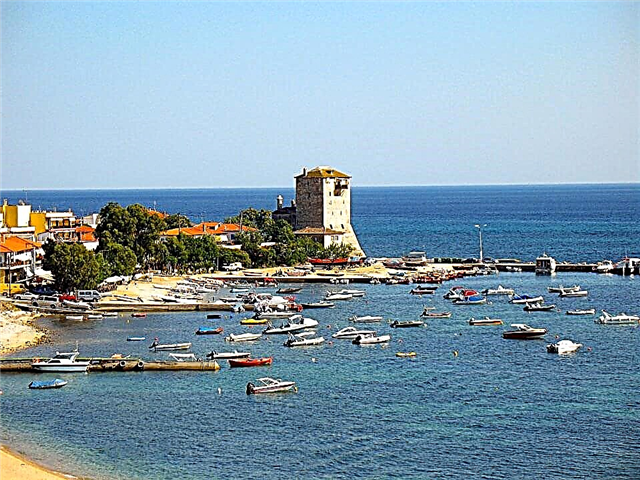
A cozy resort town located on the Ayon Oros cape, shrouded in numerous legends. The gentle waters of the Aegean Sea, washing the city, beautiful beaches, and a comfortable climate attract thousands of tourists here. It is no coincidence that the city was founded here in prehistoric times (315 BC). Only in such a blessed place, in the opinion of its founder, the philosopher Alexarch, could multilingual people, absolutely equal in rights, live.
An attempt to unite in Ouranoupoli ("city of heaven") residents speaking different languages was unsuccessful, but the legend about it remained. Probably, it cannot be reliably asserted that the current resort of Ouranoupoli is the place where they tried to create a new type of linguistic statehood. But the name stuck, the city developed, thanks to the close location of the monastic republic to Mount Athos. All conditions have been created here for a wonderful relaxing family vacation, providing various types of beach and cultural leisure.
Mount Athos
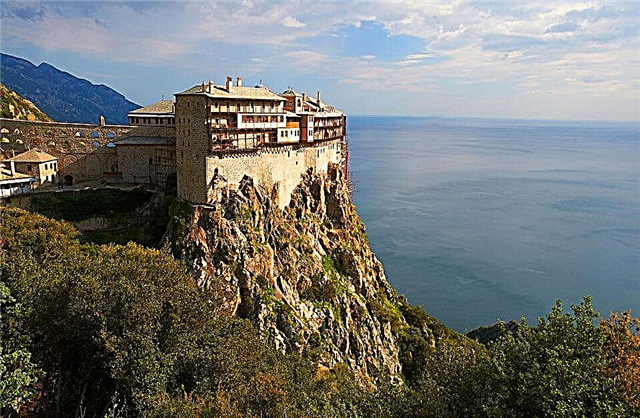
If Mount Olympus is the abode of the gods, then Mount Athos is the world famous monastic republic, the stronghold of world Orthodoxy, uniting male monks from different countries of the planet under the canopy of holiness. 20 monasteries, located at an altitude of 2200 m above sea level, are located on the eponymous pedestal among the fertile subtropical nature. For 15 centuries, Byzantine culture and the highest spirituality have been preserved here, attracting millions of pilgrims here, including great, famous personalities, male royals (for women, it is taboo here).
Mount Athos is considered the abode of the earthly sojourn of the Mother of God, which is associated with many beliefs and legends that tell how this place was chosen by the Holy Virgin. Here, it seems, the air itself is saturated with purity of holiness, Orthodox prayers and sinlessness of thoughts. It is no coincidence that famous movie and pop stars come here to feel this atmosphere of holy purity. The monastic republic lives according to the Charter, established in 1924, according to which all monasteries are under the spiritual jurisdiction of the Eastern Orthodox Church.
Cassandra
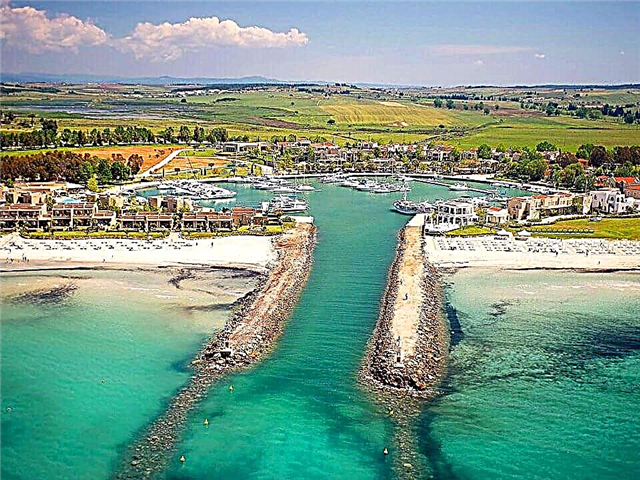
The western "finger" of Halkidiki - Kassandra bears the name of the king, whose father-in-law was the famous Alexander the Great. Active life began here in the 4th century BC, as evidenced by the results of archaeological excavations. Truly paradise nature, the proximity of the sea, the purest air, the extraordinary beauty of the surrounding landscapes attracted the first settlers here, happily settling in the enchanting area.
Here, drawings on rocks were found in relict caves, testifying to the presence of primitive people on Kassandra. The archaeological complex-museum "Olynth" displays exhibits illustrating the antiquity of Kassandra. A fascinating journey can be made through the churches of Kassandra, each of which is associated with the names of the ancient Greek gods and saints of the righteous: the temple of Zeus-Amon and Poseidon, the Sanctuary of Dionysus, the Acropolis of Antigone, the Church of St. Dmitry and other religious sites.
Modern Kassandra is a territory of resort towns and villages, with a well-developed hotel chain, beach infrastructure, a comfortable climate and uniquely beautiful views. Among them, Neo Moudania, Nea Potidea, Kallithea, Pefkohori, Afitos are very popular. The salubrious sea air, clean beaches, amazing landscapes of the peninsula make it the most attractive destination for recreation and tourism.
Loutra Pozar
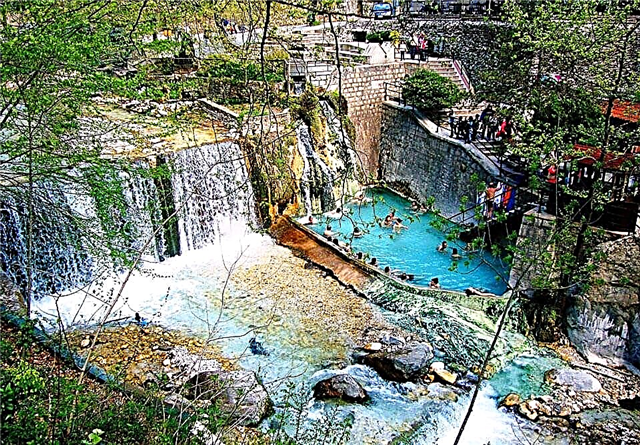
The nature of Halkidiki is immensely generous and rich, it has endowed the inhabitants with real treasures, one of which is the natural spa resort of Loutra Pozar. It is located in a cozy place, under the reliable protection of two mountain peaks blocking the path of cold winds. You need to come here for health: hot thermal springs, mountain air infused with the aromas of mountain herbs, calm serenity of nature, natural products, without exaggeration, will heal from many diseases.
Bathing water has a beneficial effect on the improvement of the respiratory, nervous and circulatory systems, bones and joints, skin. Drinking water helps in the treatment of gastrointestinal problems, dissolves excess salts in the body, and improves kidney function. You can take water procedures here all year round. There are many cozy hotels and apartments in Loutra Pozar with relatively low prices. Staying at this resort will give you maximum pleasure from water treatment, from walks in amazingly picturesque mountain landscapes, hospitality of local residents and delicious local cuisine made from the freshest natural products.
Afitos
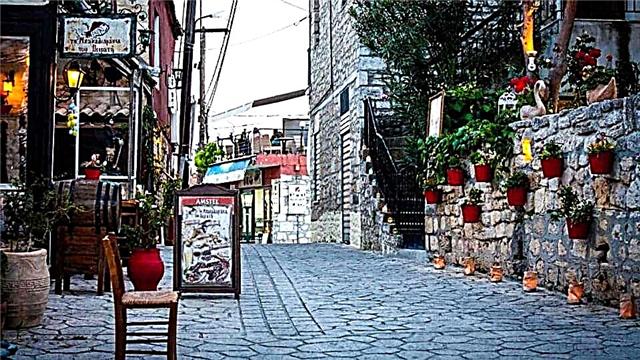
This town is extremely well located - in the very center of the Kassandra peninsula. It is convenient to get out of it on small excursions throughout Halkidiki. Afitos was chosen not only by travelers, but also by artists. Amazing architecture and wonderful views just ask for a canvas. Afytos has been known since antiquity. Aritostel, and the father of history Herodotus, and Thucydides wrote about him. It even had its own coins in use.
In the 19th century, Greece was ablaze with the national liberation struggle, and the town was abandoned for some time. The inhabitants took refuge in quieter places. In 1827, Afitos experienced a revival - its inhabitants returned. Walking along the stone-paved streets, you can feel that time has stopped here.
In this town there is a unique temple, which is the only one of its kind in Halkidiki - the temple of St. Demetrius. This is a basilica topped with a dome. Beautiful mansions - the Katsanis, Galani, Aletra families - invariably attract tourists. All guests must visit the Vrachos observation deck, from which you can admire the most beautiful views. The Acropolis of Kutsomilo is also noteworthy.
Mount Olympus
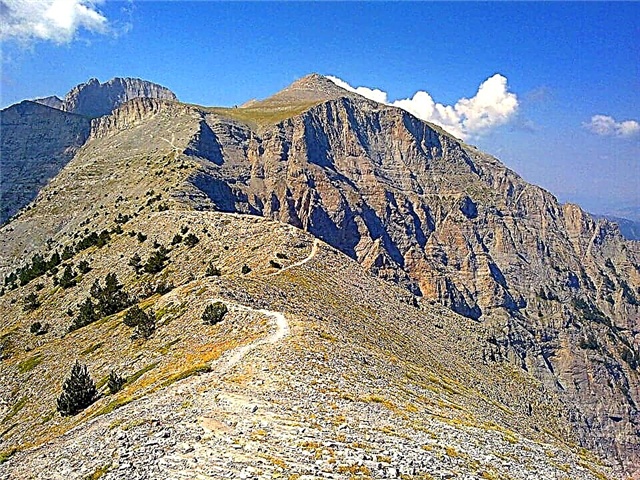
The famous mountain, or rather the mountain range, is the highest point in the northeastern part of Greece. Olympus is familiar to everyone from childhood as the abode of the all-powerful ancient Greek gods, who chose for themselves an unattainable place under the clouds. How many myths have been put together about their lives, how many plots have been invented for films and cartoons about the amazing, mysterious Olympus!
The top of the mountain consists of 6 high peaks that have their own name: Mitikas (the highest - 2917 m), Skolio, Stephanie, Skala, Agios Antonios, Profitas Ilias (Ilya the Prophet - the lowest - 2803 m). Surrounded by the mythical snow-capped peaks of the Plateau of the Muses and the beautiful alpine meadows located just below. According to legend, people from ancient times tried to climb Olympus to be closer to the gods, although mere mortals were strictly forbidden to enter there. The gatekeepers of the ora (goddess of the seasons) vigilantly guarded the approaches to the mountain.
To frighten those who aspired to Olympus, they thickened clouds over it, sent howling hurricane winds. Then people erected at one of the foothills the city of Dion in honor of the main Olympic god Zeus. In reality, its ruins were discovered in 1806, and this once again confirms that not all myths arise from scratch. Now the historical fact is the stay of A. Macedonian in Dion, from where he began to perform his first feats.
Another evidence of man's desire to be closer to the divine peaks are the ancient monasteries of St. Dionysius (at an altitude of 820 m) and the Holy Trinity, erected here in the 14th century. Olympus with all its surrounding environs has been declared a national park in order to preserve the unique ecology, flora and fauna in its original form.
Nea Fokea
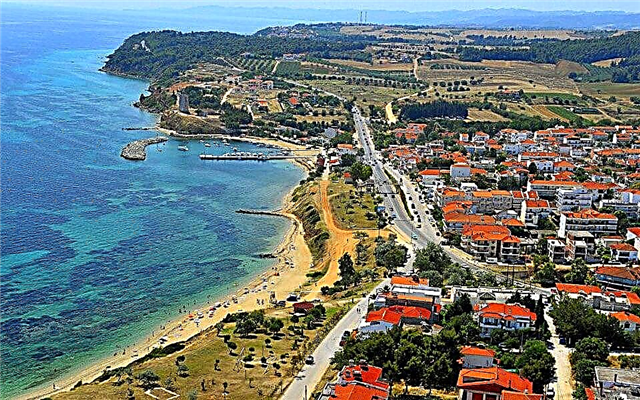
This small town officially dates back to 1924, but people have lived in these places since antiquity. Near Nea Fokea was the village of St. Paul. It was destroyed in the 15th century. The village got its name not by chance. According to legend, the Apostle Paul once preached here. On the outskirts of the town, there is a cave where he was hiding from his pursuers, and a spring near which the locals gathered for a sermon and baptism.
In front of the cave there is now a small chapel, from which a narrow passage leads inward. Now this place is often visited by tourists and pilgrims. In the 15th century, the site of the town was the location of the monastery of St. Paul. Metoch is a church or small monastery that is subordinate to a larger cloister.
To protect the monks in the turbulent Middle Ages, a Byzantine Tower was erected on an open high place on the coast, which still adorns the landscape. There is a very interesting church under it, consecrated in honor of the twelve apostles. In the town you can find old houses where monastery workers used to live.
Nea Potidea
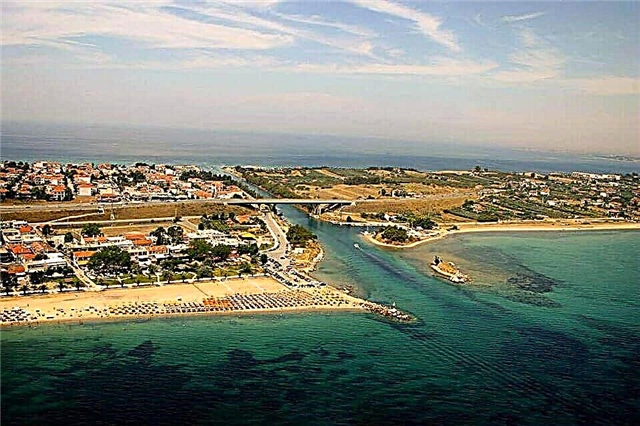
In the narrowest part of the Kassandra peninsula, the ancient town of Nea Potidea is comfortably located. Even before our era, there was an important city, which played an important role in Halkidiki. Centuries later, in 1430, the territory was captured by the Turks, who razed most of the city to the ground. Now tourists can feel the charm and power of antiquity, examining the ruins of an ancient fortress.
Parts of the wall, which was built under Justinian, have also survived. She defended the town from the side of the canal that connects the Kassandra peninsula with the mainland. Previously, Nea Potidea bore the proud name of the Gate of Cassandra. Like many Greek cities, this place boasts a large number of churches. Travelers do not bypass the temple of the Most Holy Theotokos, the churches of St. Nicholas and St. Eustathius.
The chapel of the Archangels is very interesting. It was built in the 19th century, and the materials of the ancient city were used for its construction. Now Nea Potidea is a popular resort, famous for its picturesque views, azure sea and the hospitality of the locals.
Ayia Paraskevi
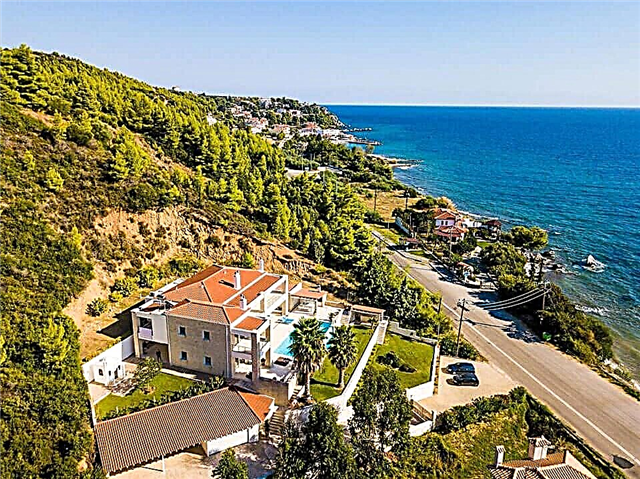
The small village, located 5 km from the sea and surrounded on all sides by a picturesque pine forest, is widely known in Greece and is popular with tourists. The secret is that there are amazing thermal springs here. Now it houses a spa resort, which is visited by many people. Ayia Paraskevi will surely be appreciated by lovers of calm, measured rest and hiking.
Several popular routes have developed here over the years. In the cozy streets of the village you can admire the authentic old houses. Then visit the church of St. Parskeva, which gave the name to the village. It is located on the top of a hill overlooking the surrounding landscapes, full of tranquility and tranquility.
There is also a Folklore Museum, where visitors can get acquainted with many ancient household items. A staircase leads to the coast from the hill. Going down it, tourists find themselves in an interesting cave. It was here that mineral springs were first discovered. There are both stalactites and stalagmites in it. Aya Paraskeva will be especially appreciated by diving enthusiasts. The coast is dotted with underwater caves, very interesting to explore.
Nea Moudania
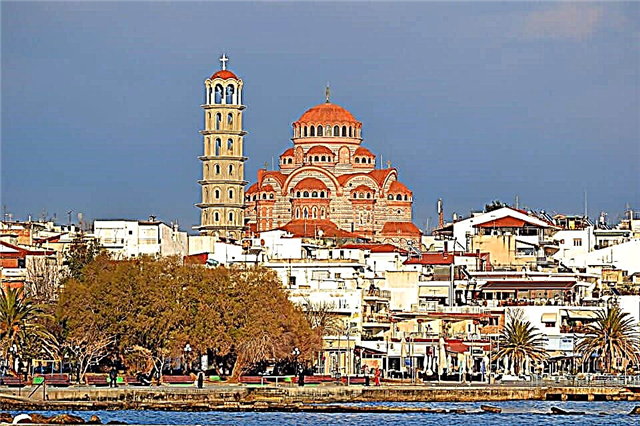
Travelers looking for a lively vacation spot filled with music, entertainment and nightlife should definitely visit Nea Moudania. It is the second largest city in Halkidiki, it is also a commercial center with a great variety of shops, markets and shopping centers. Young people will surely love the nightclubs with famous DJs, and lovers of sophisticated relaxation will delight themselves with a visit to the theater.The performances take place in the open air on the seashore.
The main attraction of this place is a beautiful church. This structure can be seen from anywhere in the city. The temple consists of two parts. The first is a basement, consecrated in honor of Nicholas, Irina and Raphael. The second is the main one and bears the name of St. George. The magnificent pink brick building surrounded by columns is the hallmark of the city.
Guests of the city who are interested in cognitive recreation can visit the Ethnographic Museum. Another interesting place is the Fisheries Museum. Fishermen have settled here for a long time, so this activity leaves an imprint on the city. So, in mid-July, residents and guests of the city celebrate the Day of the Sardines on a grand scale.
Kallithea
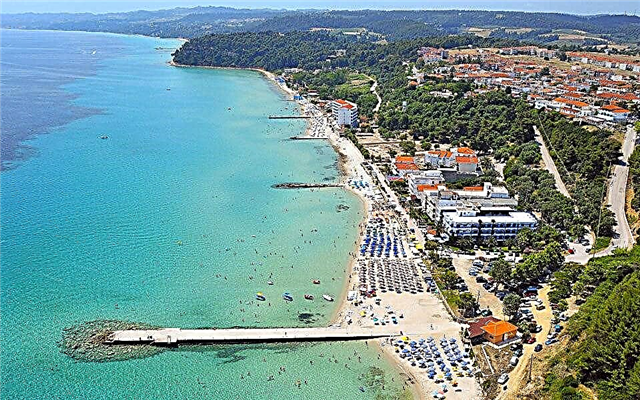
This sonorous word translates as "beautiful view". The name of the town is completely true. This is one of the most famous resorts in Halkidiki, attracting many tourists from year to year. Kallithea is an ideal place for families with children. The entrance to the water is shallow, and the sea is extremely calm.
Numerous hills protect from strong winds, so there are no stormy waves here. Young people will appreciate the vibrant nightlife, while older people will happily devote time to great shopping. Among the sights of particular interest are the ruins of ancient temples dedicated to Zeus and Dionysus. They were built before our era, when paganism triumphed in Greece, giving the world unsurpassed masterpieces of architecture. Christian churches are also worth visiting.
One of them is consecrated in honor of Saint Panteleimon, the second is named after Nicholas the Pleasant, who is very revered in Greece. Those wishing to admire the wonderful landscapes and take unique photographs can visit the observation deck.
Hanioti
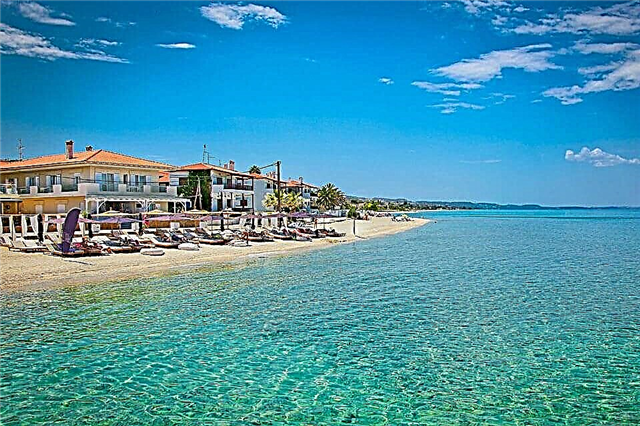
This resort village is just an hour's drive from the bustling and bustling Thessaloniki. Coming here, tourists are immersed in the atmosphere of a calm and unhurried vacation. Families with children will have a particularly good time here. The town appeared in ancient times, which is confirmed by numerous archaeological research. Almost nothing remained of the ancient city, much was destroyed due to the strongest earthquake in 1935.
The inhabitants of the city moved a little closer to the sea, but did not want to completely leave these fertile places. And it is not surprising, because the climate here allows you to grow olive trees and graze goats and fish. The new settlement quickly increased in size and became a famous seaside town.
Tourists here can not only soak up the beach, but also visit the most interesting places. In the old days, Christian pilgrims often came here, because there are many amazing temples here. From this town it is convenient to get to nearby settlements, where there is also something to see.
Suroti
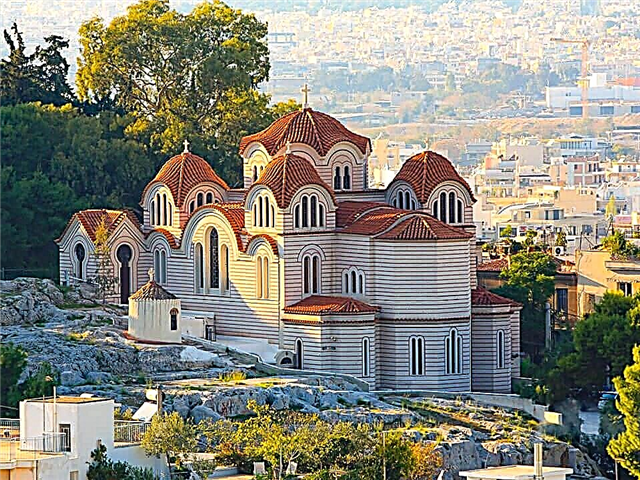
The cozy village of Suroti is located 20 km from Thessaloniki. All locals and many tourists appreciate this place for its amazing mineral water. She is considered one of the most famous in Greece. But this place is famous not only for the water. Christian pilgrims often come here. In Suroti there is an old nunnery consecrated in honor of John the Theologian. It was here that Paisius Svyatorets, revered by all Christians, found his last refuge, whom the church venerates as a saint.
He was born in Cappadocia in 1924, and became a monk after the war. Paisiy founded a women's monastery near Suroti, where he lived until the end of his days. The thoughts and reasonings of Paisius were carefully recorded and preserved by the sisters to this day. The Orthodox venerate the Monk Paisios, and, as a rule, there are always pilgrims from Russia in the monastery. The monastery is crowned by the top of a huge hill, which offers magnificent views of the olive groves belonging to the monastery.
Ierissos
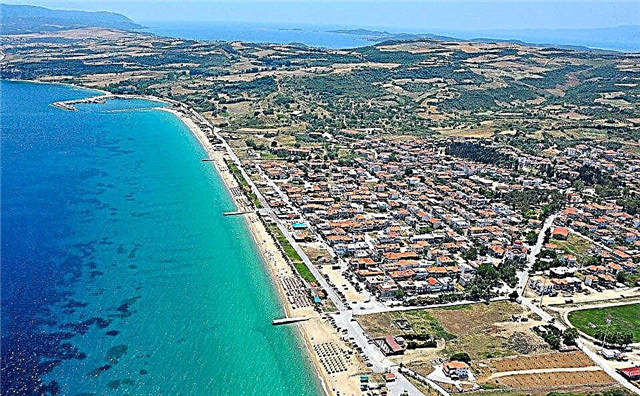
The town dates back to the 7th century BC. Previously, it was a significant policy that is part of Macedonia. Its glorious past has left its descendants with a rich historical heritage. Very interesting for visiting the city's shipyards. The inhabitants of Ierissos have been considered excellent ship craftsmen since ancient times.
The secrets of the building were carefully kept in families and were invariably passed down from generation to generation. Until now, boats are made here using old technologies. High-quality pine logs are used for their construction. Walking around Ierissos, it is worth seeing the ruins of the ancient fortress wall that protected the city and its inhabitants from military incursions.
On the embankment of interest is the Aquarium, which holds 40 cubic meters of water. It is inhabited by inhabitants of local waters. It is also the only Greek city where you can enjoy watching a 3D movie. The amphitheater, where the shows are held, is equipped with special stereoscopic equipment. Films about Mount Athos and the mysterious underwater world are especially popular.
Poliyyros
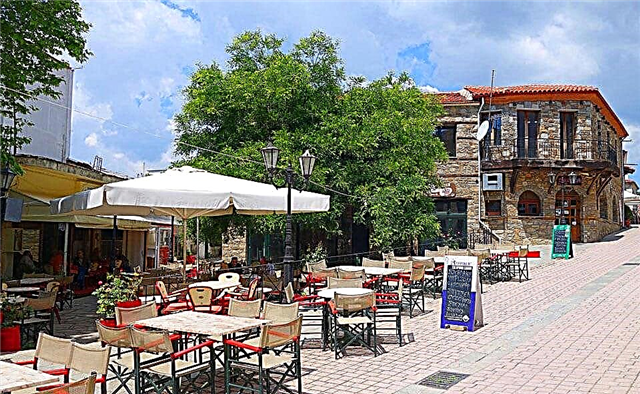
The full panorama of the city can be viewed from next to the Chapel of Elijah the Prophet. It is easy to get here from the north side of the city and there are walking tours along the trail. Olive fields are located below the city. Poliyyros is one of the many cities that attract tourists for its architectural diversity. Here, old buildings are organically combined with modern buildings.
One of the city's landmarks is the Archaeological Museum, located at Iroon Square (Heroes' Square) in the city center. Excavations are presented that give an idea of the life and social activities of a person since the Bronze Age, as well as the archaic and classical periods: weapons and jewelry.
Also in the museum you can see statues, the marble head of Dionysus. Thanks to its rich exposition, the museum attracts the attention of tourists. In the park next to the museum there is a spring from which you can draw water. The city is rich in temples and small churches. The Church of St. Nicholas is located in the central part of the old town.
Agios Nikolaos
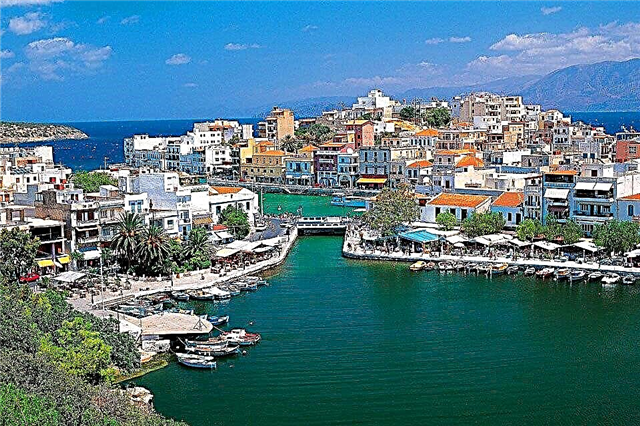
Snow-white houses crowned with red roofs, fragrant air filled with the scent of pine trees and almost 30 kilometers of the cleanest sandy beaches - all this pleases tourists who have come to rest in this ancient village. Since prehistoric times, people have chosen this picturesque area with an excellent climate. The villagers have long been famous as unsurpassed stone craftsmen. That is why almost every old house here can be considered a tourist attraction.
An ancient tower catches the eye on the coast. Archaeological research of the famous ancient city of Singos was also carried out here. Tourists can visit this ancient monument. The remains of the ancient acropolis have also been preserved. Pilgrims and travelers interested in spiritual life will not miss the opportunity to admire the Monastery of St. Nicholas and the Chapel of St. George.
Also here is the courtyard of one of the famous monasteries of Athos - the monastery of Xenophon. It is good to come here at the end of July, then you can enjoy the merry holiday dedicated to St. Paraskeva and take part in folk festivities.
Stagira
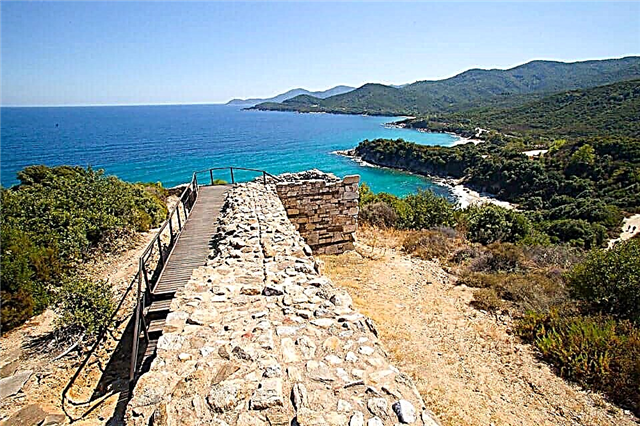
This city is famous throughout Greece, and it is not surprising, because one of the greatest philosophers, Aristotle, was once born here. The park, named after the thinker and philosopher, is the most significant architectural monument in Halkidiki. The park is equipped with interactive platforms, where all the most important inventions of the scientist are presented: a lens, a telescope, a sundial, a kinetic pendulum, a musical instrument and much more.
Here, in Stagira, the great philosopher, scientist and mentor of Alexander the Great found his last refuge. Until now, the Greeks remember and honor him, organizing the Aristotelian festival, which attracts many spectators every year.Every summer, the park hosts holidays, seminars, cultural events dedicated to the scientist.
From the mountain where the park is located, a magnificent view of the bay opens. This place, reliably hidden behind the hills, will reveal to its guests amazing monuments of antiquity - the remains of defensive walls, the foundations of old houses. In addition, the bathhouse built by Ishak Pasha, the ruins of the Madem Agha fortress, the Madema ditch on the site where ancient mines once stood, and the statue of the philosopher Aristotle in the central square deserve attention.
Gerakini
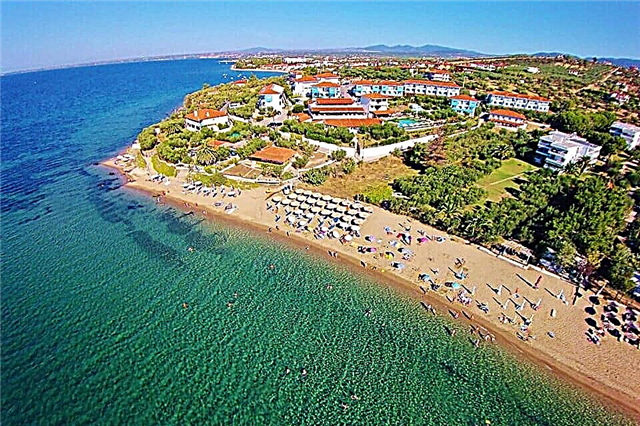
This town is not distinguished by its ancient origins. It was originally built due to the discovery of white stone deposits nearby. This wonderful building material was distributed not only across the territory of Greece, but also exported to other countries. Now the city has been renovated, but in the old part there are mines and settlements of miners. In the second half of the 20th century, the city was discovered by tourists. It is rightfully called one of the most beautiful in the whole country.
The simplest and seemingly inconspicuous attraction is the stone-paved streets decorated with beautiful benches and lanterns. These details convey the true spirit of the city. An obligatory point of the tourist program is a visit to the Meteora monastery. It was built in antiquity and is located at a great height, on a rocky ledge.
Unfortunately, the buildings have come down to this day already quite badly destroyed, but the beautiful view that opens from there will not leave anyone indifferent. And, of course, travelers are called here by wonderful beaches, crystal clear sea and mild climate.
Vourvourou
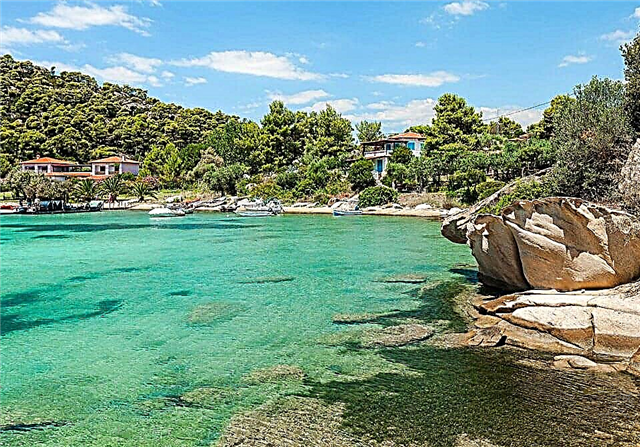
The coastal village of Vourvourou is located in the northeast of the Sithonia peninsula. Its beaches are rightfully considered one of the best for families with children. The sea is turquoise, warm, calm. The beaches are quite narrow, but long and rather uncrowded. There are places where it is impossible to approach the sea, as private property is located there.
Vourvourou is an old village whose inhabitants have been fishing for many years. And now, walking around the town, you can buy fresh fish from the sailors. Tourists are invariably interested in visiting the small town where the teachers of the Aristotle University live. Unusual space planning and spectacular architecture are considered a curious local landmark.
In the north of this area is the so-called Great Wall. Once upon a time, the inhabitants tried to protect the entire peninsula with its help. Only a small part, about 50 meters long and about three meters high, has survived to this day. It is noteworthy that the thickness of this structure is 2 meters. The wall is lined with stones that fit tightly together and hold without any binding material.
Kavurotripes beach
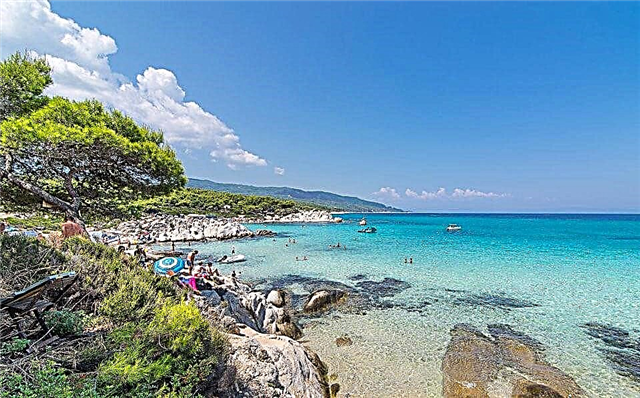
Sithonia is rich in beaches - one of the most popular can be safely called Kavurotripes, better known among the people as Orange Beach, although the name itself is translated "Crab holes". The beach got this name for a reason. The rocky shores have been severely affected by the water, which has carved bizarre holes in them that resemble burrows.
The beach is located 5 km north of the city of Sarti, 23 km from Vourvourou. It is easy and quick to get there by car, but it is possible to get there by regular bus or boat. Photographers will find atmospheric nature and a riot of colors - turquoise sea, rocks turning orange in the sun at sunrise and green pine trees.
But there is no need to look for solitude here - many vacationers sit in sun loungers, and wild tourists stay for several days and live in tents. Music plays, many families with children, as the sea is shallow here. The descent to the beach is not the most convenient, but after walking along the coast, you can find many tiny coves for 2-3 people.
Glarokavos beach
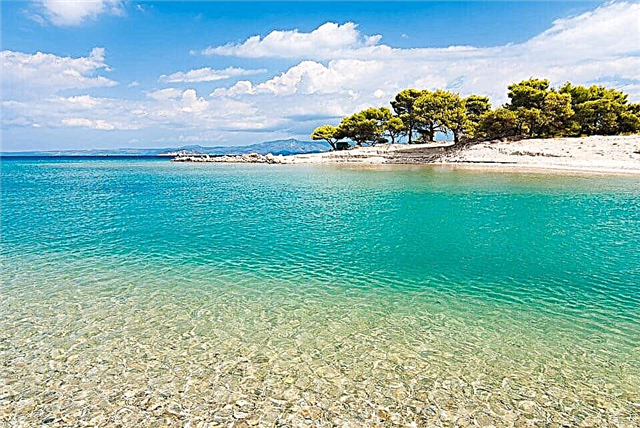
The beach is located next to Sithonia, 114 km from Thessaloniki. This place can truly be called the pearl of the peninsula. Perfectly clean lagoon, light sand, smooth entry into the water - all this attracts vacationers. The weather is always calm here, because the air currents are restrained by tall trees. Calm water without strong waves will not interfere with a relaxed serene relaxation.
Until relatively recently, the beach was wild and unsettled, but such a delightful place could not remain without the attention of people for a long time. Now both locals and tourists who want to take a break from the hustle and bustle and rush come here. This place is ideal for families with children. You can often find married couples, camping enthusiasts, divers and young people.
You can get there both by car, by country road, and by boat, which run from Sithonia in season. It is possible to leave the car in an equipped or spontaneous parking lot. The best time to visit is late spring or September-October. Summer is very hot here and can cause discomfort for unusual tourists.
Armenistis beach
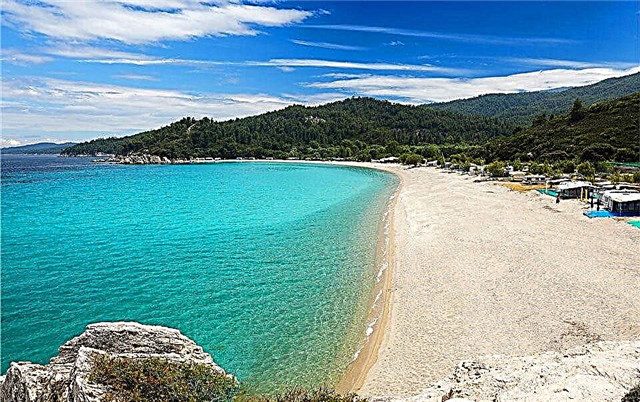
One of the cleanest beaches in Greece. Winner of the prestigious international award - the Blue Flag, he confirms his title twice a month, successfully passing tests. This title is awarded to the most environmentally friendly corners of the planet. Finding the beach is easy. On the road of Sithonia, there will be a sign between Sarti and Vourvourou.
The beach is very large and wide, about two kilometers long. There was also a place for volleyball courts, fishing boats, shops and sun loungers with umbrellas. There are no towns and villages nearby, but there is a camping, which is a caravan with terraces, Wi-Fi throughout the territory, there is even an ATM.
The beach has excellent views. Clear turquoise water, white sand, lush green shore and landscape with the famous Mount Athos attract many tourists. The entrance to the water is shallow, but after walking just a few meters, you can get to a deep place. Divers will love the beach - the cliffs descend with ledges and under the water are a fascinating sight.
Waterfalls Barbara
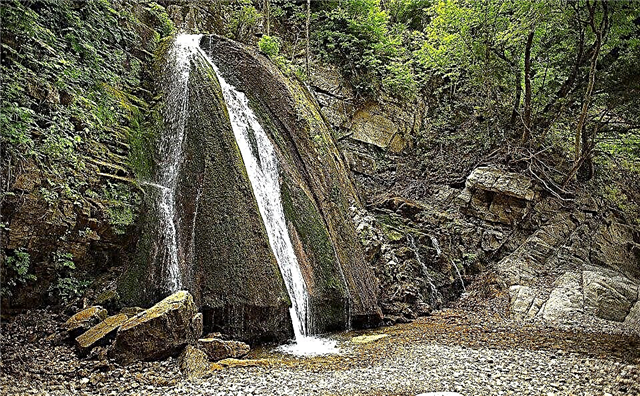
The Halkidiki peninsula always surprises tourists. Here you can relax on the beach listening to the lapping waves, walk along the old-fashioned streets of local villages, or find picturesque places that are truly a natural landmark. These unexplored corners include the waterfalls located near the villages of Olympiada and Varvara.
It is worth preparing for the trip in advance, as there will be obstacles along the way. A dirt road leads there, so it is better to order a 4x4 jeep, especially since you have to wade across the river. The path is picturesque and not easy, but the place itself is equipped with gazebos, and paths have been laid for convenience. Travelers can see two wonderful waterfalls falling regularly from a small cliff.
The flora and fauna are very interesting. Nature will delight you with birds, butterflies, salamanders, crabs, turtles, and you can also meet snakes and bees with which you need to be on your guard. Sitting on the observation deck, you can relax surrounded by huge beeches, wild hazel, linden and alder.

